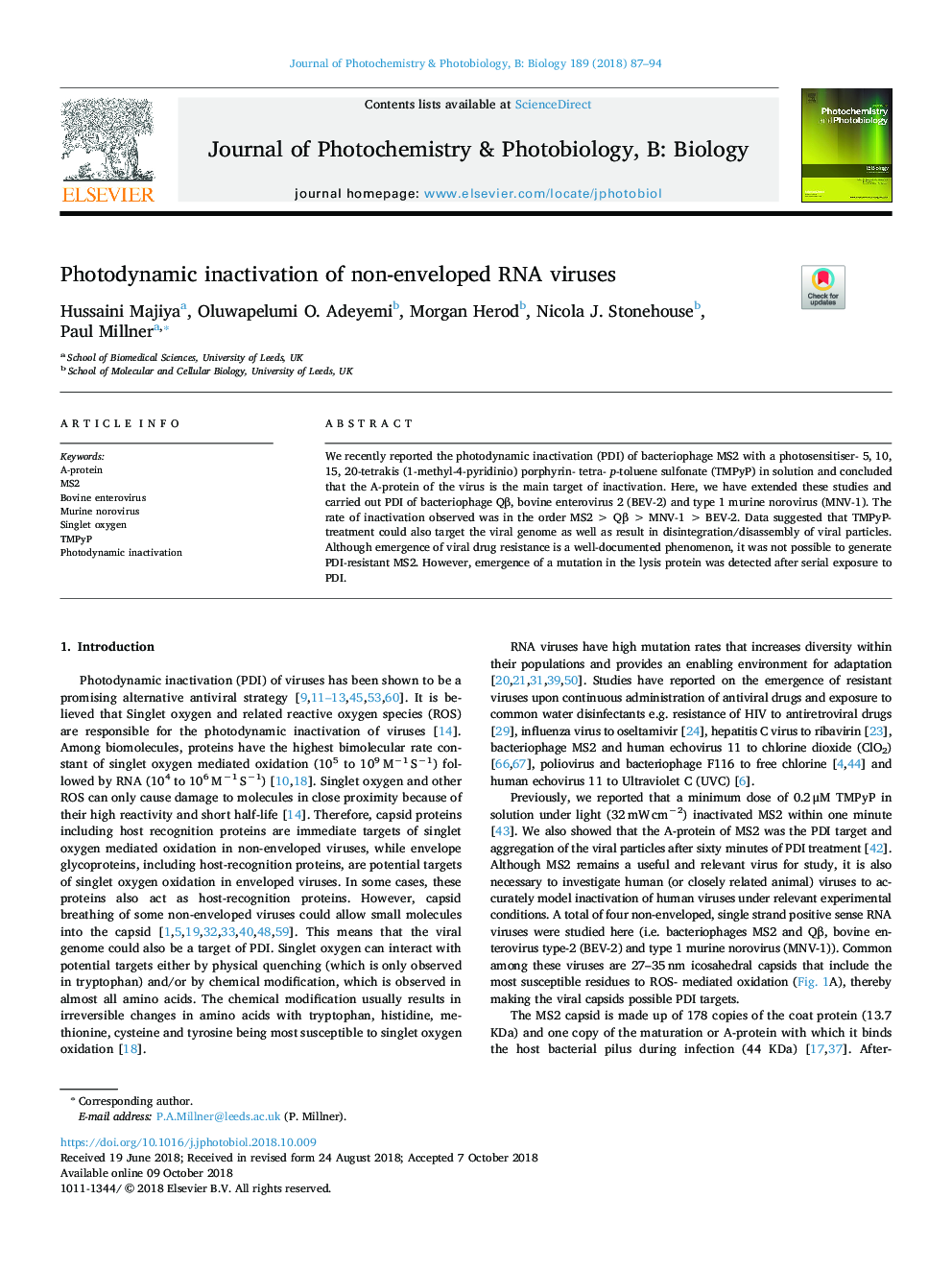| Article ID | Journal | Published Year | Pages | File Type |
|---|---|---|---|---|
| 11021623 | Journal of Photochemistry and Photobiology B: Biology | 2018 | 8 Pages |
Abstract
We recently reported the photodynamic inactivation (PDI) of bacteriophage MS2 with a photosensitiser- 5, 10, 15, 20-tetrakis (1-methyl-4-pyridinio) porphyrin- tetra- p-toluene sulfonate (TMPyP) in solution and concluded that the A-protein of the virus is the main target of inactivation. Here, we have extended these studies and carried out PDI of bacteriophage Qβ, bovine enterovirus 2 (BEV-2) and type 1 murine norovirus (MNV-1). The rate of inactivation observed was in the order MS2â¯>â¯Qβâ¯>â¯MNV-1â¯>â¯BEV-2. Data suggested that TMPyP-treatment could also target the viral genome as well as result in disintegration/disassembly of viral particles. Although emergence of viral drug resistance is a well-documented phenomenon, it was not possible to generate PDI-resistant MS2. However, emergence of a mutation in the lysis protein was detected after serial exposure to PDI.
Related Topics
Physical Sciences and Engineering
Chemical Engineering
Bioengineering
Authors
Hussaini Majiya, Oluwapelumi O. Adeyemi, Morgan Herod, Nicola J. Stonehouse, Paul Millner,
